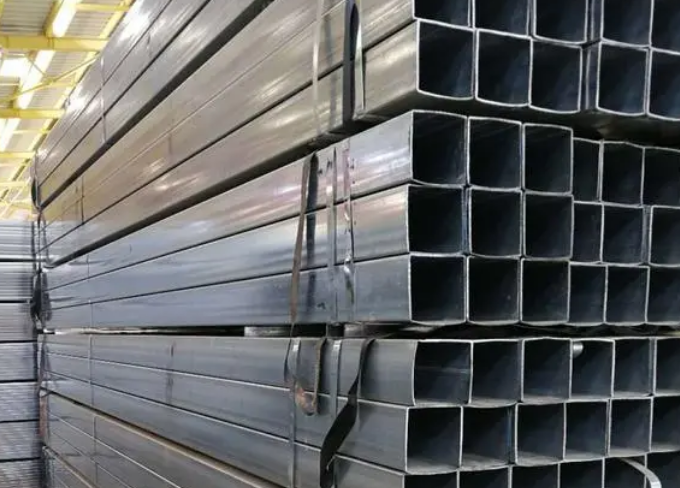Basic overview of square and rectangular tubes:
Square tube is a kind of shaped steel tube that is slotted and bent on a steel plate and then welded into it. It is usually called square tube or square hollow structural steel tube. The square tube has a square cross-section and has the advantages of clear corners, precise dimensions, smooth surface, and corrosion resistance. It is widely used in construction, machinery manufacturing, furniture manufacturing, billboard production and other fields.
Rectangular tube is a shaped steel tube similar to square tube, but its cross-sectional shape is rectangular. Rectangular tubes are cut into shape from steel plates and then made through welding or seamless manufacturing processes. Rectangular tubes have the characteristics of light weight, high strength, no deformation, and corrosion resistance. They are one of the important materials in construction, bridges, machinery manufacturing, solar brackets and other industries.

The difference between square tube and rectangular tube:
1. Shape difference
The cross-section of a square tube is square with clear corners; while the cross-section of a rectangular tube is rectangular with all four corners at right angles.
2. Size difference
The sizes of square tubes and rectangular tubes can be customized according to needs, but the common square tube sizes are 20*20mm-400*400mm, and the common rectangular tube sizes are 20*30mm-200*400mm. The material of square and rectangular tubes is usually steel, of which carbon steel and stainless steel are the two most common ones. The most common material for square and rectangular tubes is
ASTM A500.
3. Differences in uses
Square tubes are suitable for construction, machinery manufacturing, automobile manufacturing, furniture manufacturing, billboard production and other fields; while rectangular tubes are commonly used in construction, bridges, machinery manufacturing, solar brackets and other fields.
4. Differences in manufacturing processes
The manufacturing process of square tubes is commonly done by cold drawing, cold rolling, hot rolling, etc.; while the manufacturing process of rectangular tubes is generally made by welding or seamless manufacturing processes.
Advantages and disadvantages of square tubes and rectangular tubes:
1. Advantages of square tubes: precise cross-section and stable dimensions; smooth surface and beautiful appearance; high strength, good elasticity and large load-bearing capacity; wide range of applications and many application fields.
2. Disadvantages of square tubes: the internal structure easily forms dead corners and is difficult to install.
3. Advantages of rectangular tubes: good bending and torsion resistance, able to withstand horizontal and vertical loads; good welding performance, smooth surface and no defects; no deformation, corrosion resistance, and low cost.
4. Disadvantages of rectangular tubes: The cross-sectional dimensions are not as precise as square tubes, and deformation is prone to occur at the corners.
Conclusion:
Square tubes and rectangular tubes are different in shape, size, purpose and manufacturing process. The specific choice of steel pipe needs to be selected based on specific application scenarios and needs. Generally speaking, square tubes are used in more precise machining and manufacturing fields; while rectangular tubes are suitable for some structural arrangements. They can be regarded as an enhanced version of square tubes and can also be used in the construction of some large structural parts. More practical.
Go here to learn more about "square tube sizes"


